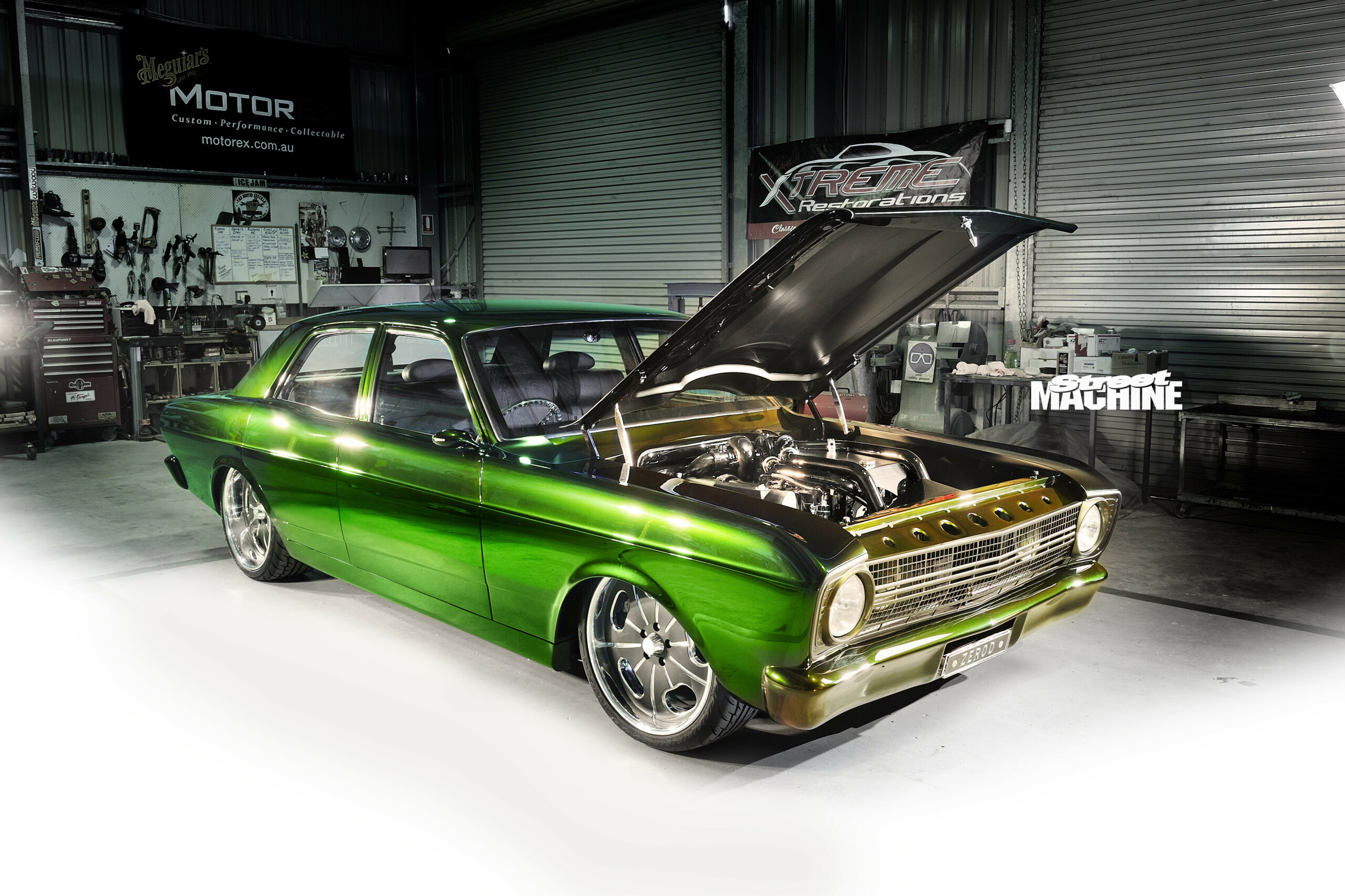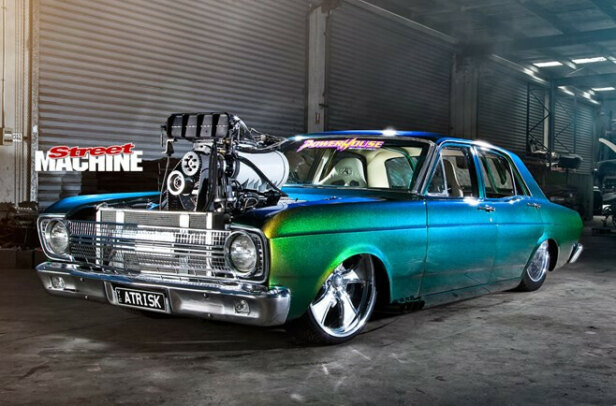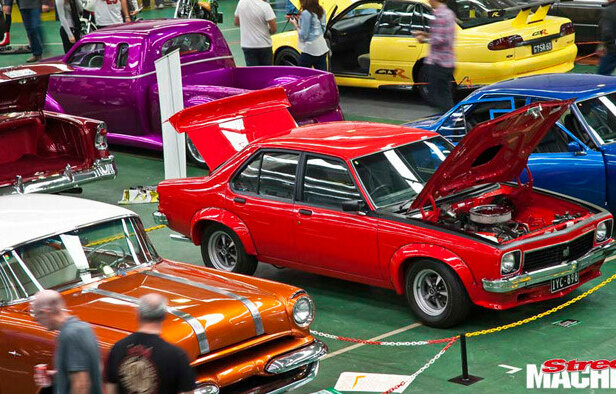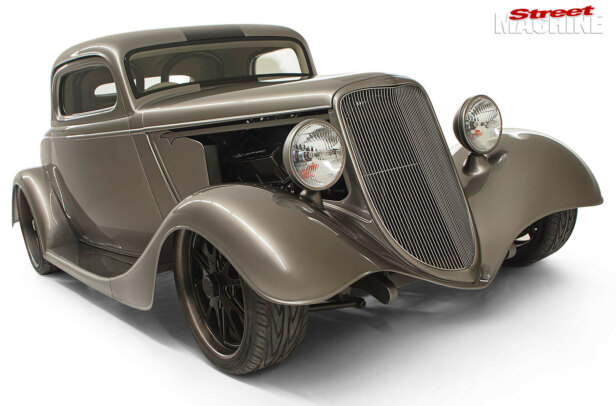The modern mantra is reduce, reuse, recycle. But street machiners and hot rodders have been living it since before tree-huggers were invented. Buying fifth-hand cars and trawling through wrecking yards is about as environmentally friendly as you can get.
Mick Fabar wanted to get that message across, while moving it on a bit further with his XR.
This article was first published in the September 2012 issue of Street Machine
“The idea was to see what could be done towards sustainability without compromising build quality or the true muscle of the sport. Could we build a car that struck a chord with true street machine enthusiasts while showing the general population that we aren’t a mob of hoons, and could we tackle the carbon issue head on?
“Car owners and builders are intelligent, usually successful people concerned about all sorts of stuff — the environment, government, regulations, industry. They contribute a lot to society and I think that goes unrecognised. We’re certainly put in a box that’s not a true reflection of what we’re like.”
A successful street machine build takes planning and although this project came together in just seven months, a lot of head-scratching went into it beforehand.
“I did about 18 months of research on how we could build something that still appealed to the everyday street machiner but showcased that any of us could build an environmentally friendly car. Some of the things you need to be to be efficient and sustainable — we’re already doing it.”
One of the keys was reducing the ‘embodied energy’ in parts — “Not buying a $10 part from the States that comes over on a diesel boat.”
He was also looking towards the future and what it held for his kids. Owning an award-winning building company called Green Homes, he has a pretty good handle on what’s required when it comes to building with sustainability in mind.
The outlets in the bumper are for the rear-mounted radiator. Tail-light bezels were designed to mount from the inside
“Our kids are all car-crazy and I wondered what they’d be building in 15 years. What’s going to be available? As far as environmental issues are concerned, the industry hasn’t taken a very big step in that department so we started out by building a car that encompassed the goals and visions and the mission statement from the construction company.”
The project started with an unloved XR Falcon that was headed for the tip. It still cost $1000 to get it off the previous owner via eBay, but it was saved and that’s what mattered. To power his green machine, Mick chose a Powerstroke turbo diesel and an Allison four-speed box. Putting these components together was a challenge.
“We cut the front of the car off, cut the firewall out, cut the floor out right back to the bumper bar, took all the sills off and redid all the bodywork. We made a new chassis then built the front clip using all the original metal.”
The chassis allowed some clever packaging solutions. Take the radiator — it’s in the boot and coolant runs through food-grade stainless tubes welded into each of the chassis rails. That thing in front of the engine is an air-to-air intercooler.
The airbags reside in the boot and are actuated by pushrods that run through the boot floor
Of course, a radiator needs airflow so Mick and the team tested that in a clever way: “When we designed the air tunnel in the floor, we got a smoke machine to make sure we got all the airflow right. You could watch the smoke come out through the vents in the rear bumper. Due to the volume of coolant in the system, we probably don’t even need a radiator.”
The suspension is pretty trick as well, especially in the rear where a cantilevered airbag system is actuated by pushrods that go through the boot floor and connect to custom arms. The airbags are just in front of the rear tail-lights.
“We could have put leaf springs on the car but I wanted to be able to hang it on the deck. If you put it on stands, you can lay the sills past the tyres!”
The front-end is Jaguar — not some off-the-shelf reproduction part but the real deal, scrounged from a wrecking yard. It also travels through an extreme range of motion, thanks to a well-sorted airbag system.
Highly modified Jag front suspension is a thing of beauty. Note the reverse-mounted alternator
Using all of the original panels, Dez Knights and Rob Bennett of Knights Panel Works constructed a one-piece removable front clip. “Everyone thinks it’s a fibreglass front but it’s all steel, with a chrome-moly frame,” Dez says. That makes the donk a hell of a lot easier to work on. If it wasn’t a diesel, it’d be a cinch to change the sparkplugs!
The rear suspension is controlled by rocker arms which attach to the diff via pushrods. There’s enough travel that the sills will go lower than the wheels if it’s on jack stands
He did have to perform a little bit of metal magic on the bonnet to make it fit over the top-mounted turbo. After days at the wreckers eyeballing various bonnets, he found a winner — a 1986 Nissan Pintara.
“We needed to extend the bonnet and I didn’t want to put a join across the back, near the hinge. The ’86 Pintara has the same swooped-back shape as the top of the guards — all I had to do was extend that an inch to make it touch the windscreen. Mick wanted a reverse cowl scoop that looked factory. The five inches at the front were hand-fabbed and we needed a bit more height in the scoop to clear the turbo. All I did was cut the skin, lengthen it and push it up, and it was perfect.”
Dez also extended the front edges of the guards using some 3mm wire that he cut off the fence at the workshop! That gives the headlight buckets an almost frenched look; it’s a subtle but very clever touch that really tidies up the front.
The interior features more recycled materials — the leather trim was sourced from offcuts that would ordinarily be thrown away. The dash is from a 1956 F-100, while the instrument cluster that fits perfectly into it is from a 1957 Chev. The rear parcel shelf sports solar panels that can charge the battery — even under the artificial lights of an indoor arena. We might not be swapping in diesel motors too soon but I reckon a few people took that solar panel idea home.
The interior has been trimmed with leather offcuts, while the dash is ’56 F100 with a ’57 Chevy instrument cluster. A Wilwood pedal box lends a race feel and you’ll do pretty well to spot the hidden rollcage
Telling everyone you’ve built something sustainable is easy; verification gives it gravity.
“Across all industries, one of the problems about being sustainable is that there’s a ‘greenwash’ going on, with no actual benchmarks,” Mick says. “I got in touch with a professor at Bond University whose class did it as a project over six months.”
Thier Environmental Impact Study certified the car’s zero carbon footprint — hence Zero’d.
It was a lot of extra work, with the university demanding hard facts. For example, it wasn’t enough for Mick to tell them the House Of Kolor paint met the stringent Californian requirements; they needed to know what those standards were and what they meant.
All of the glass in the car was custom made, and just because he could, Mick placed the fuel filler in the middle of the window. Those wild-looking speakers are actually solar panels that help run the auxiliaries
“Anyone can do something carbon neutral — just go out and plant 1000 or 10,000 trees. We didn’t offset it with anything other than what was involved in the production.”
Hopefully Mick’s opened a few eyes and it might make people think a bit more before they tackle their next project about what they can do to reduce, reuse and recycle.
Just some of the Zero’d team — other luminaries that helped included Andrew Ash and Mick Carter
MICK FABAR’S XR FALCON IN DETAIL:
DIESEL POWER:
1. Turbo inlet
2. Turbocharger
3. Cooled intake charge out of ’cooler
4. Hot, compressed intake charge
5. Air/air intercooler
6. Coolant filler cap
7. Custom cover hiding fuel pump
UNDERNEATH THE BONNET:
1. Paint is satin body colour over black
2. Custom headers
3. Coolant pipe
4. Receiving point for front clip pins
UNDERNEATH:
1. Radiator air intake mesh
2. Watts link
3. Pushrod for rear suspension
4. Coolant pipes
5. Panels covering airbag tanks
MICK FABAR
1967 FORD XR FALCON
Paint: HOK Kandy Shimrin 2
DONK
Type: Ford 7.3l Powerstroke turbo-diesel
Internals: All standard
Radiator: PWR, boot-mounted
Exhaust: Twin system, exiting through sills
Power: 500hp, 910ft/lb
SHIFT
Box: Allison four-speed auto
Diff: Nine-inch
BENEATH
Front end: Jaguar, modified
Shocks: Air Ride with So-Cal shocks (f&r)
Steering: Rack and pinion
Brakes: Wilwood
ROLLING STOCK
Rims: Showwheels 8×20 (f), Showwheels 10×20 (r)
Rubber: Federal
THANKS
Knights Panel Works; Andrew Ash, panels and fabrication; Chad Ackland, Extreme Restorations; Mick Carter, worked around the clock on the interior; Owen Webb, paint finish design; Ben Zelukovic, paint; Brett Davis, wiring; Stewart Vail, Racers’ Choice, pipe-work and making the diesel engine look so good; the crew — Rob, Red, Dave, Johnny, Gordo, Robbo, Dave Taylor, Browney, Pete, Norm, Trent, Lee, Badman, Jason and Benny




Comments